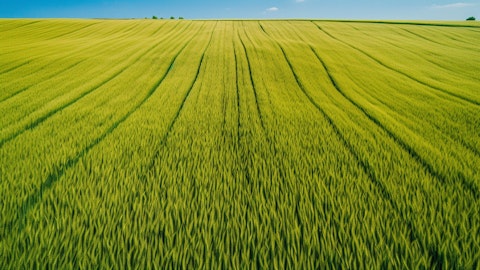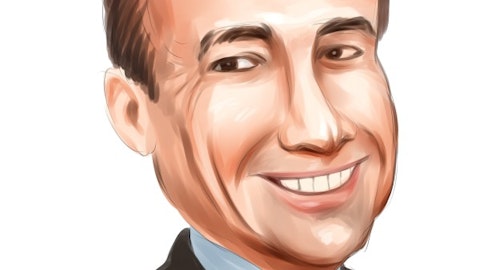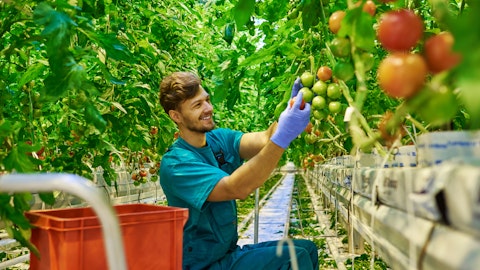Chris Bohn: I would also say, Josh, that all three of the FEED studies that we have ongoing, the SMR, the HR and then the flue gas all the partners that Tony just spoke of are all participants in that even though the JDAs and the MOUs may look different. So, all the partners are working collaboratively to determine what we need to do from a carbon intensity standpoint, how does that influence the technology we choose, and as Tony said, and then really the contract for difference and the economics not that in the end.
Josh Spector: Understood. Thank you.
Operator: Thank you. The next question comes from Ben Isaacson with Scotia Bank. Please go ahead.
Ben Isaacson: Thank you very much and good morning. Just one question from me. Tony or Bert, can you talk about the situation in Russia when it comes to nitrogen supply? If we break down ammonia urea and nitrates, where are we right now in terms of supply? Where have we come from and where are we going? And I’m also referring to the pipeline that’s being built right now? Thank you.
Bert Frost: Yes, Ben, good morning. This is Bert. And the situation in Russia is as cloudy and clear as it’s ever been. So, that’s a little bit of a dichotomy. But it’s difficult because — there are some places in the world that will not accept Russian product. And so there are places that are. And the largest happens to be the United States, which is surprising with where we are geopolitically but the other is the EU. And so what has happened over the last year since the invasion has been just a reorganization of the distribution channel for Russian product. So, a lot goes to Brazil, a lot goes to North America or not even Canada, actually just the United States and then to Europe. And so with the recent restrictions on ammonium nitrate, a lot of that was stored in St. Petersburg and are probably a decision as a reflection of some of the capabilities of the Ukraine to cause disruptions.
They have canceled some of that movement or all of that movement out of those ports and reorganizing how they’ll be able to export. That has created a little bit of a shortage of ammonium nitrate in some markets. And with ammonia, you’re right. The — but the pipeline that used to go through Ukraine was stopped during the war and has been stopped and probably is not operable today, that was there usually. And so they have developed a new export corridor through the Port of Taman, and they’re working to get the Togliatti tons out through that. That’s a black seaport and that we expect to happen probably in Q3. And so going from, let’s say, 0.5 million tons of exports out of the Baltics, we’ll probably convert to a couple of million tons 1.5 million to 2 million tons probably over the next year and probably positioning that product in the Mediterranean and Morocco and different places.
Urea and UAN, a lot of that UAM they produce comes to NOLA and the East Coast. as well as Europe. And that’s probably on a — looking at the statistics for United States, UAN imports from Russia are up from Trinidad, they’re down. but that balance of UAN is probably okay. And that’s about it. I think what we’re going to see out of Russia is trying to get those tonnes out. They put out some export restrictions but I think those are manageable, and we’ll see what happens going forward.
Tony Will: Yes. I mean to tag along on that one just for a second. It’s kind of shocking and I think actually, JERA made mention this as well in their call. But what’s kind of shocking is that there’s been all of this focus on not funding the Russian war machine and not buying Russian gas and yet the U.S. is arms wide open to take urea and UAN coming out of Russia, which is effectively just natural gas that’s been converted. And so it’s — the U.S. it’s funding the very war effort over there that on the one hand, it’s condemning. So, it’s absolutely shocking, but I think that’s not surprising given the political climate over here and the fact that we’re in an election year. But you see some of that going on, I’d say, in Europe as well where there’s a lot of Russian nitrogen that’s planning its way into Europe, and it’s just supplanting what used to be gas.
Ben Isaacson: And maybe just a quick follow-up on that. Can you talk about Ukraine? I mean before the invasion, I think, in 2014, Ukraine was a major exporter. And where do they stand right now? Are they self-sufficient for the net importer?
Bert Frost: So, it’s actually when you take into account the acres that are planted and applied and harvested against probably the previous — let’s go back, maybe not 2014 as far back, but before the war, you’ve got a loss of acres, obviously, in the contested area, especially, which is good agricultural, land but you have several plants that are offline and [indiscernible] plant in Odessa that has been — they’re trying to — I just read they’re trying to bring that back up.
Tony Will: Although that one was struggling economically even well prior to the war. So, that one has always been sort of up and down again.
Bert Frost: So, there are gas questions on gas supply. And yes, they have imported product. And so it’s a question of why I think getting through the current crisis to see where we are coming out of it.
Ben Isaacson: Thank you very much.
Operator: Thank you. The next question comes from Ben Theurer with Barclays. Please go ahead.
Ben Theurer: Good morning and thanks for taking my questions. Just wanted to follow-up a little bit on the global dynamics and thanks for all the comments on Russia, but coming back to China and India to a degree. So, in your press release, you kind of alluded to China probably going to be back exporting some 4 million tons also India being a little more aggressive on the internal supply, and you’ve talked about the tender and the implications. So, if you think about it those two markets, coupled with what you just said on Russia. How does that kind of level set the pricing? How do you think about pricing going forward in the medium term when if cost curves stick where they are right now, just given that potential supply out of China and India on top of the Russian you just mentioned?





